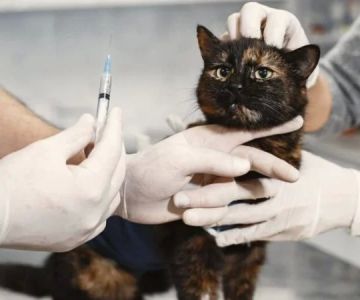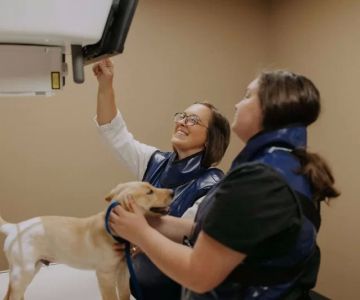What Does FAS Stand for in Veterinary Medicine? Understanding the Term and Its Implications
- 1. Introduction to FAS in Veterinary Medicine
- 2. What Does FAS Mean in Veterinary Context?
- 3. FAS as a Diagnostic Tool in Veterinary Medicine
- 4. How FAS is Used in Treatment Plans
- 5. Case Studies Involving FAS in Veterinary Medicine
- 6. Conclusion: Why Understanding FAS Matters for Veterinarians
1. Introduction to FAS in Veterinary Medicine
Veterinary medicine, much like human healthcare, involves complex terminology and abbreviations that are crucial for diagnosing and treating animals. One such term that veterinarians encounter is "FAS." While it may not be a household term, understanding what FAS stands for in veterinary medicine is important for anyone involved in animal health care. In this article, we will explore what FAS means, how it is used in the diagnosis and treatment of animals, and why veterinarians need to stay informed about its implications. Whether you're a veterinary professional, student, or pet owner, this guide will provide valuable insights into this important concept.
2. What Does FAS Mean in Veterinary Context?
FAS stands for "Feline Asthma Syndrome" in veterinary medicine. It is a condition commonly found in cats, characterized by inflammation and constriction of the airways. This condition can cause symptoms similar to those of human asthma, such as coughing, wheezing, and difficulty breathing. Feline Asthma Syndrome can be triggered by allergens, irritants, or respiratory infections. The condition may vary in severity, and while it is more common in older cats, it can affect cats of all ages.
Veterinarians use a variety of diagnostic tools to confirm the presence of FAS. This typically involves a physical exam, observation of clinical symptoms, and diagnostic imaging such as X-rays. Sometimes, veterinarians may need to perform tests like bronchoscopy or cytology to further evaluate the condition. Once diagnosed, treatment strategies can be implemented to manage symptoms and improve the cat’s quality of life.
3. FAS as a Diagnostic Tool in Veterinary Medicine
FAS, as a diagnostic tool, plays a significant role in veterinary medicine. Diagnosing FAS early is crucial for effective treatment. One of the first steps in identifying this condition is recognizing the symptoms, which often include wheezing, coughing, and labored breathing. If a veterinarian suspects FAS, they may recommend a series of tests such as blood work, chest X-rays, or even an endoscopy to visualize the airway. These tools help in confirming the diagnosis and ruling out other possible respiratory issues.
FAS can sometimes be mistaken for other respiratory diseases, such as bronchitis or heart disease, which is why precise diagnostic techniques are essential. Veterinarians will assess the cat's history, environmental factors, and any potential allergens that may contribute to the condition. Accurate diagnosis ensures that the most effective treatment plan can be implemented, which may include medication, environmental changes, or lifestyle adjustments for the cat.
4. How FAS is Used in Treatment Plans
Once FAS is diagnosed in a cat, creating a personalized treatment plan is essential for managing the condition. Treatment typically focuses on reducing inflammation and improving airway function. Veterinarians often recommend corticosteroids to reduce inflammation, bronchodilators to open up the airways, and antihistamines to manage allergic reactions. In severe cases, oxygen therapy may be necessary to help the cat breathe more easily.
Aside from medication, veterinarians may also suggest changes to the cat's environment to minimize asthma triggers. This might include eliminating exposure to tobacco smoke, dust, or strong cleaning products. Additionally, managing the cat's weight and encouraging regular exercise can help improve overall lung function and reduce the frequency of asthma attacks.
5. Case Studies Involving FAS in Veterinary Medicine
To better understand how FAS is handled in veterinary medicine, it is useful to examine real-life case studies. One such case involved a 7-year-old cat named Whiskers, who had been experiencing frequent coughing episodes and difficulty breathing. After a thorough examination and diagnostic testing, the veterinarian diagnosed Whiskers with Feline Asthma Syndrome. The treatment plan included the use of inhaled steroids and a bronchodilator, as well as making changes to his environment, such as reducing dust and eliminating cigarette smoke.
Within a few weeks, Whiskers showed significant improvement, with fewer asthma attacks and a noticeable increase in his energy levels. This case highlights the importance of early diagnosis and a tailored treatment plan for managing FAS. Veterinarians work closely with pet owners to ensure that the treatment plan is effective, and they continue to monitor the condition to make adjustments as necessary.
6. Conclusion: Why Understanding FAS Matters for Veterinarians
Understanding what FAS stands for in veterinary medicine is essential for veterinarians, pet owners, and anyone working with animals. Feline Asthma Syndrome is a manageable condition, but only if diagnosed early and treated properly. Veterinarians need to be well-versed in the symptoms and diagnostic procedures associated with FAS to provide the best care for their feline patients. By staying informed about FAS, veterinarians can help improve the quality of life for cats suffering from this condition.
If you are a veterinarian looking to expand your knowledge or a pet owner concerned about your cat’s health, consider seeking expert advice on managing FAS. Early intervention can make a significant difference in your pet's health and well-being. Remember, with the right treatment plan and environmental adjustments, cats with FAS can lead happy, comfortable lives.











